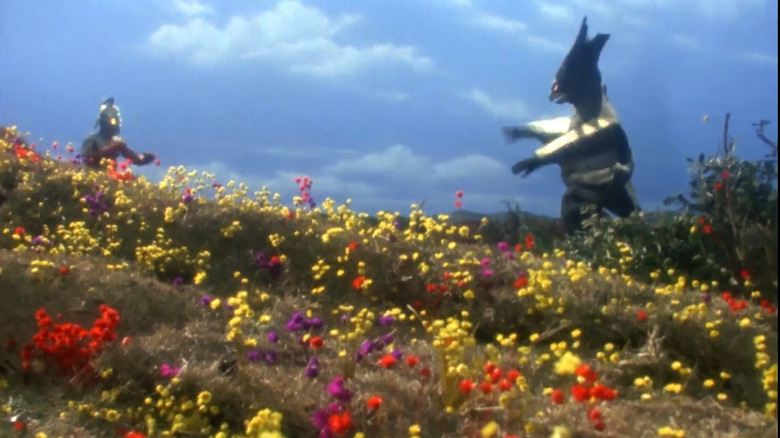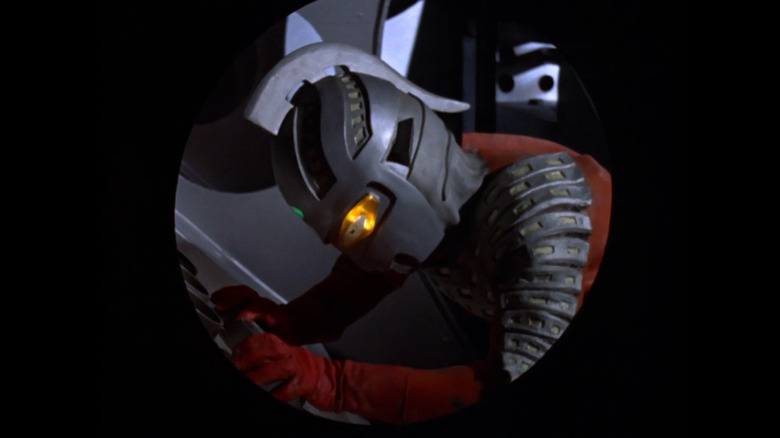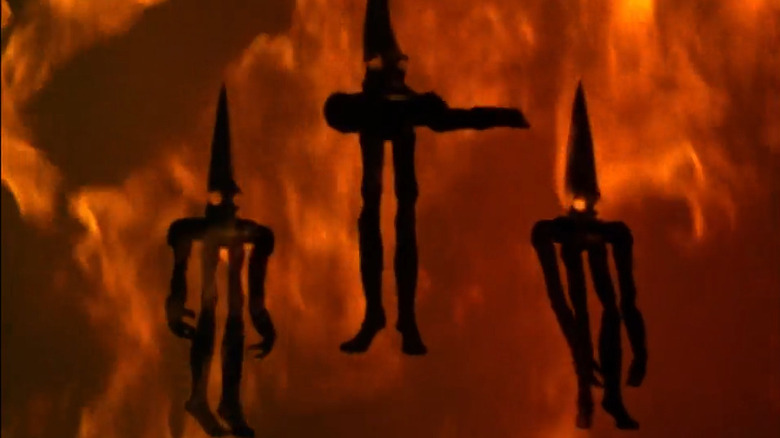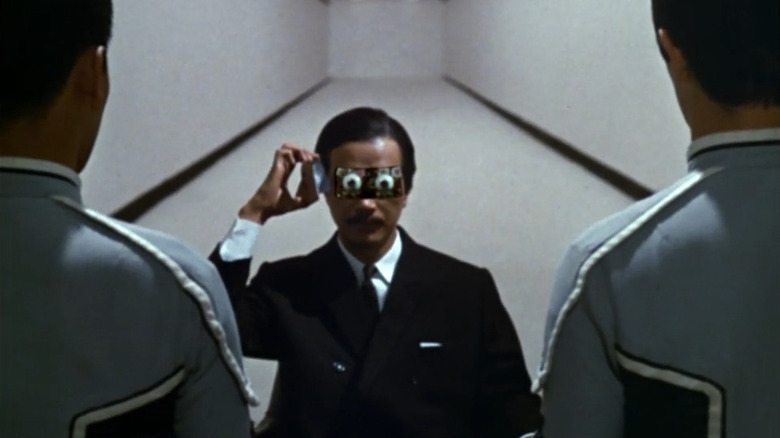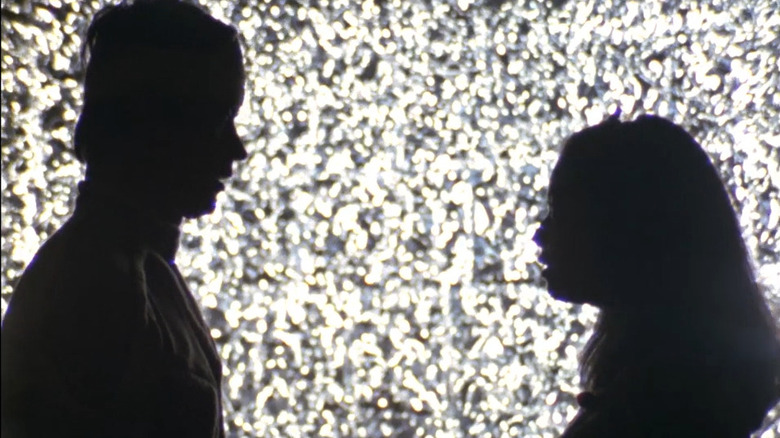The Daily Stream: Ultraseven Combines Spies, Star Trek, And Superheroes
(Welcome to The Daily Stream, an ongoing series in which the /Film team shares what they've been watching, why it's worth checking out, and where you can stream it.)
The Series: "Ultraseven"
Where You Can Stream It: Tubi, Shout! Factory TV
The Pitch: One day while on patrol, the alien hero Ultraseven stops by Earth. Taking on the human identity of "Dan Moroboshi," he joins forces with the Ultra Guard to protect the planet from nefarious aliens that wish to conquer it. Each episode brings new and unexpected surprises. Thrill at the alien threat that crucifies Ultraseven in "The Seven Assassination Plan." Marvel at the craft of "The Marked Town," an impeccably lit episode in which aliens drive humans into a frenzy with laced cigarettes. Watch in horror as humanity battles Earth's undersea denizens, who only wish to be left alone, in "Ambassador of the Nonmalt." Meanwhile, "The 700 Kilometer Run" features Dinosaur Tank and it's exactly what you think it is. All these and more in "Ultraseven," a beloved sci-fi series that inspired all your favorite shows, movies, and games.
Why it's essential viewing
"Ultraseven" was intended to be an ending. "Ultra Q," which aired in 1966, inspired a science fiction craze through its melding of monstrous kaiju and "Outer Limits" style spookiness. Its successor "Ultraman" added a heroic, human-shaped alien to that formula, as well as a supporting organization called the SSSP (or Science Patrol). Both series were produced by Eiji Tsuburaya, the special effects wizard behind films like "Godzilla" and "Mothra." Audiences desperately wanted more of "Ultraman." But these shows were hugely expensive and time-consuming to make, even though Tsuburaya Productions had an extensive prop department to draw from. Plus, Tsuburaya and his team were artists. They weren't satisfied just making more "Ultraman." They wanted to make something that nobody had ever seen before.
Tsuburaya admired the style and sophistication of 1960s spy shows such as "Mission Impossible" and "The Man From U.N.C.L.E." He also adored the special effects of "Thunderbirds," a 1965 TV puppet drama featuring great planes, explosions, and miniature work. "Ultraseven" integrated these influences into the "Ultraman" formula. The villains of "Ultraseven" are alien invaders rather than simply unexplained phenomena. The Ultra Guard have access to advanced planes and technology but frequently find themselves in over their heads against dangerous foes. Ultraseven himself is able to remain human-sized rather than always growing huge. It's a fitting approach for a series intended to be a grounded, adult alternative to "Ultraman."
Showdown at 140 Degrees Below Zero
"Ultraseven" is not just a superhero show. It's a sci-fi show, operating in the same vein as "Doctor Who" and "Star Trek." Like "Star Trek," the characters are stock archetypes that navigate challenges with professionalism. Like "Doctor Who," "Ultraseven" exists in a malleable universe that shifts in tone and style depending on the needs of the episode. Some propose moral quandaries, like "Dark Zone" (which beat Jonathan Hickman's "Avengers" run to the punch by decades). Others, like "Escape Space X," conjure atmospheric alien worlds. "Ultraseven" has a beginning and an end, but the continuity is light enough that a curious viewer can pick and choose episodes as they wish.
But the series is at its best when it explores the physical and mental limitations of the Ultra Guard. In the fantastic 25th episode, "Showdown at 140 Degrees Below Zero," a snowstorm conjured by aliens shuts down the Ultra Guard's base as well as its heating. While Ultraseven struggles with his alien vulnerability to cold, his fellow soldiers and scientists risk their lives to restore the generators as their superiors argue over evacuation.
In the next episode, "Super Weapon R-1," the Ultra Guard test a powerful bomb on a seemingly empty planet only to find themselves responsible for genocide. The planet's last living creature flies to Earth to take revenge, stomping through ruins that resemble Nagasaki's Urakami Cathedral. The episode ends on a hopeful note, as Dan Moroboshi convinces the scientists to discontinue the bomb's production. "Ultraseven" is at least willing to challenge the assumptions of its all-powerful military even as it positions them as heroes.
Nightmare of Planet No. 4
"Ultraseven" is also exceptional at being weird. The twelfth episode of the series, "From a Planet With Love," was banned in Japan for featuring a creature design inspired by nuclear bomb victims. The forty-third episode, "Nightmare of Planet No. 4," transports Dan Moroboshi and his colleague Soga to a dystopia run by machines. In the episode's most harrowing scene, the two of them witness human actors on a film set shot to death by the crew. At the end of the episode, of course, Dan transforms into Ultraseven and wrecks the machine city. The episode is framed within the series as a dream, too outrageous for even the Ultra Guard to believe. But the implication remains that there are forces in the real world far deadlier than "Ultraman" kaiju, with no Ultraseven to help us.
These two episodes and others were directed by Akio Jissoji, a filmmaker with roots in Japanese New Wave cinema. Jissoji helmed several episodes of the original "Ultraman," including the classic "My Home is Earth." Per Mike Dent at Zimmerit, his distinctive lighting and use of low/dutch camera angles were a big influence on Hideaki Anno, director of "Neon Genesis Evangelion" and the recent "Shin Ultraman." Jissoji was inspired by the ambition and adult slant of "Ultraseven" to take even greater risks with his episodes. When producers complained that "Nightmare of Planet No. 4" lacked a monster, Jissoji threatened to write a new script in which Ultraseven fought every single kaiju that had appeared in the series to that point (via Ultra Blog DX). The producers backed down, and the episode was released as is.
From Pokémon to Gridman
"Ultraseven" was not the immediate success that "Ultraman" was. But artists were watching and learning. Ultraseven calls upon friendly kaiju called "capsule monsters" throughout the series. Decades later, a man named Satoshi Tawajiri envisioned a video game called "Capsule Monsters" in which trainers stored powerful creatures inside of balls. We now know that series as "Pokémon."
The finale of "Ultraseven," "The Biggest Invasion in History," is similarly foundational. The drama, the scale of destruction, and the use of sparkling background lighting after Dan Moroboshi reveals his alien identity have been borrowed and repurposed in countless future productions, such as the Tsuburaya Productions-produced "SSSS.Gridman."
"Ultraseven" is a product of its time in many respects. The supporting cast is thinly developed. The focus on alien invasions and stakeouts cuts down on sheer episodic variety that makes the "Ultraman" franchise enjoyable. "Ultraseven" is best approached as a platform for ideas or cinematic craft instead of the character-based storytelling that drives modern television. Even so, you have to applaud the ambition of Eiji Tsuburaya and his crew.
Future tokusatsu serials — even the best of them — would be toy advertisements first and television second. "Ultraseven" was driven by artists whose number one goal was to make the best show they could. Years later, this approach would bring about the financial ruin of Tsuburaya Productions as a company. But in 1967, there was nothing else like it on TV.
